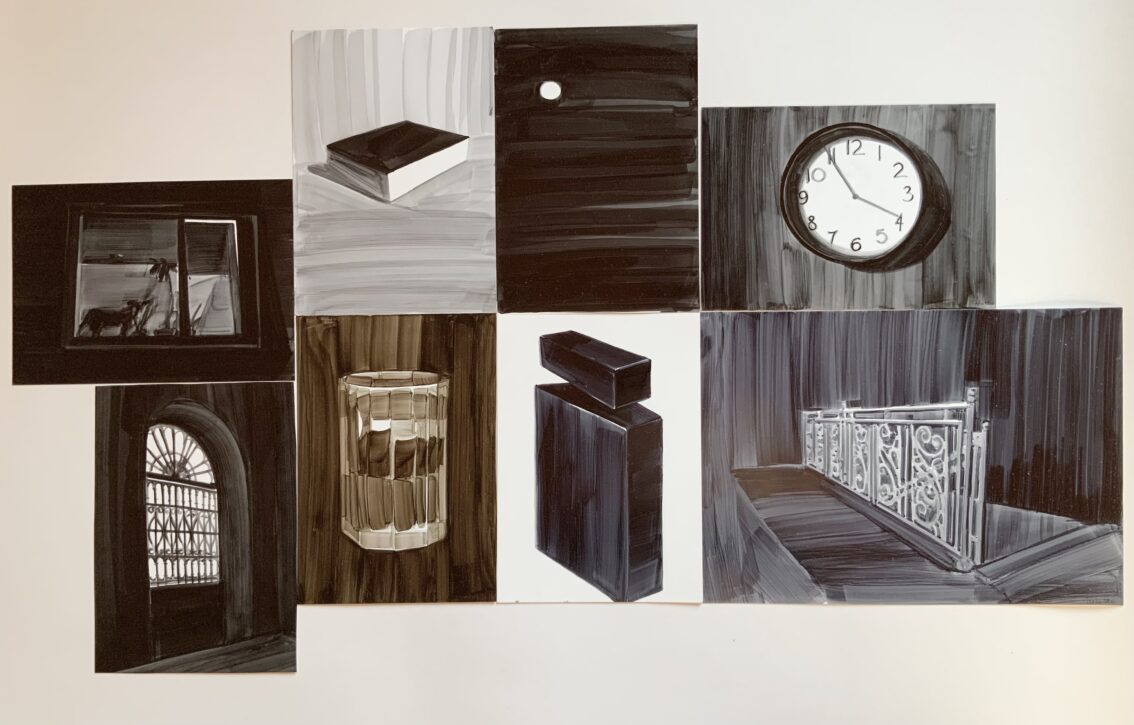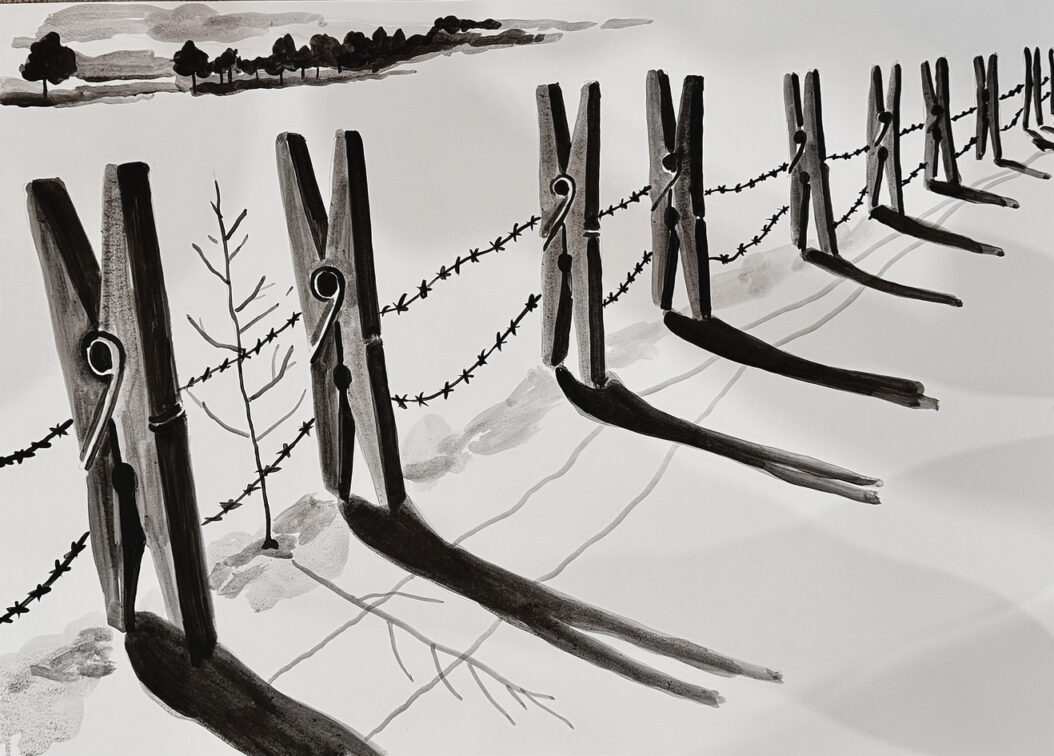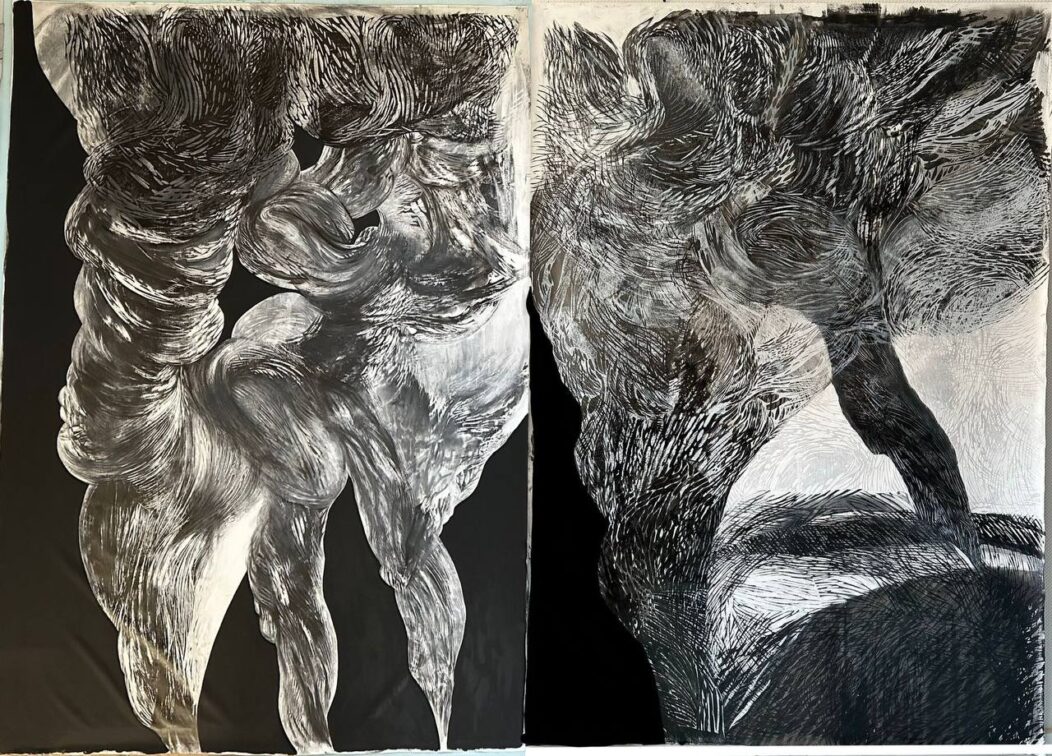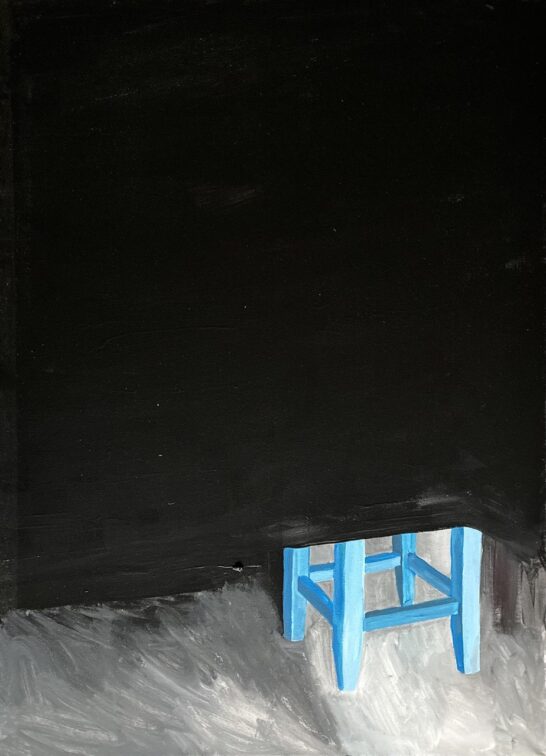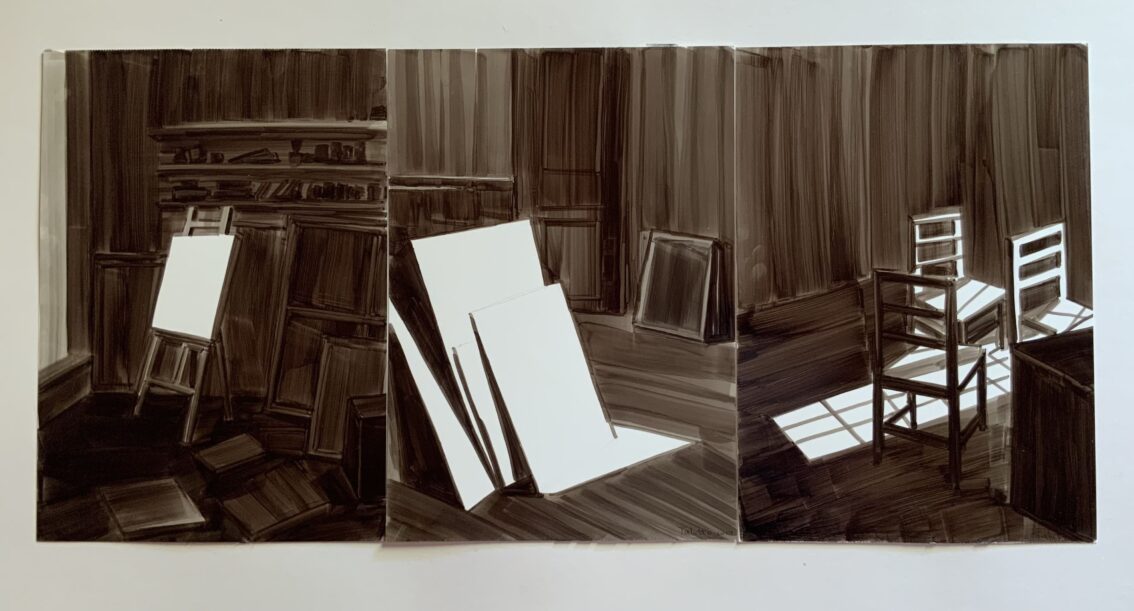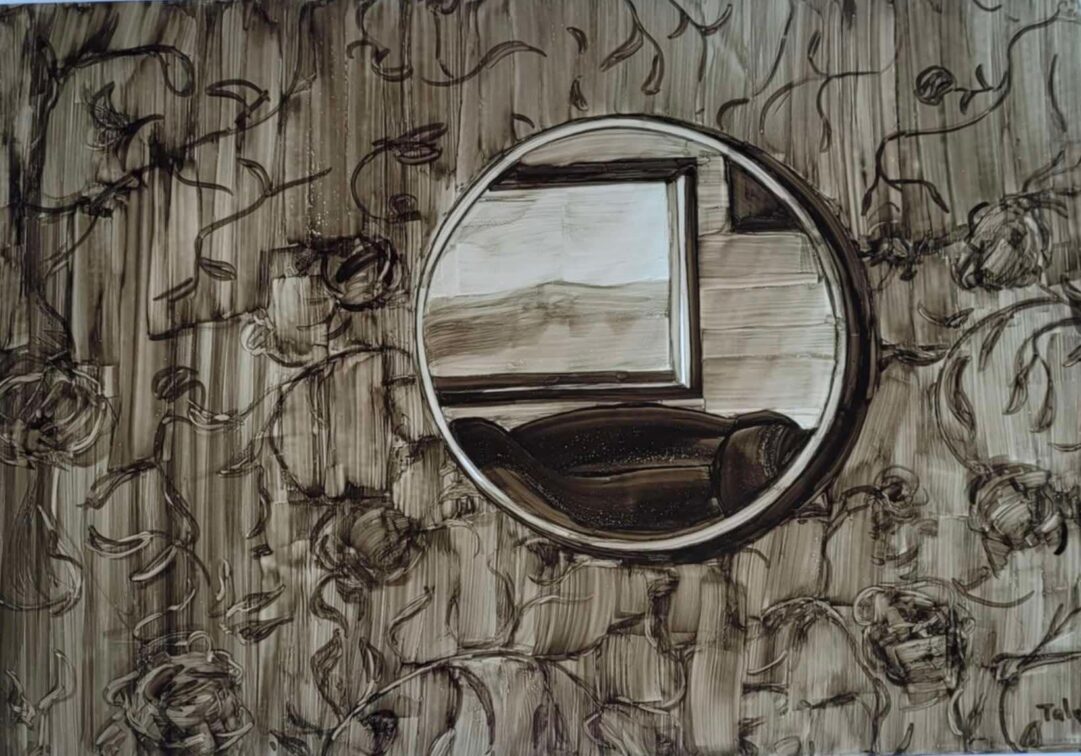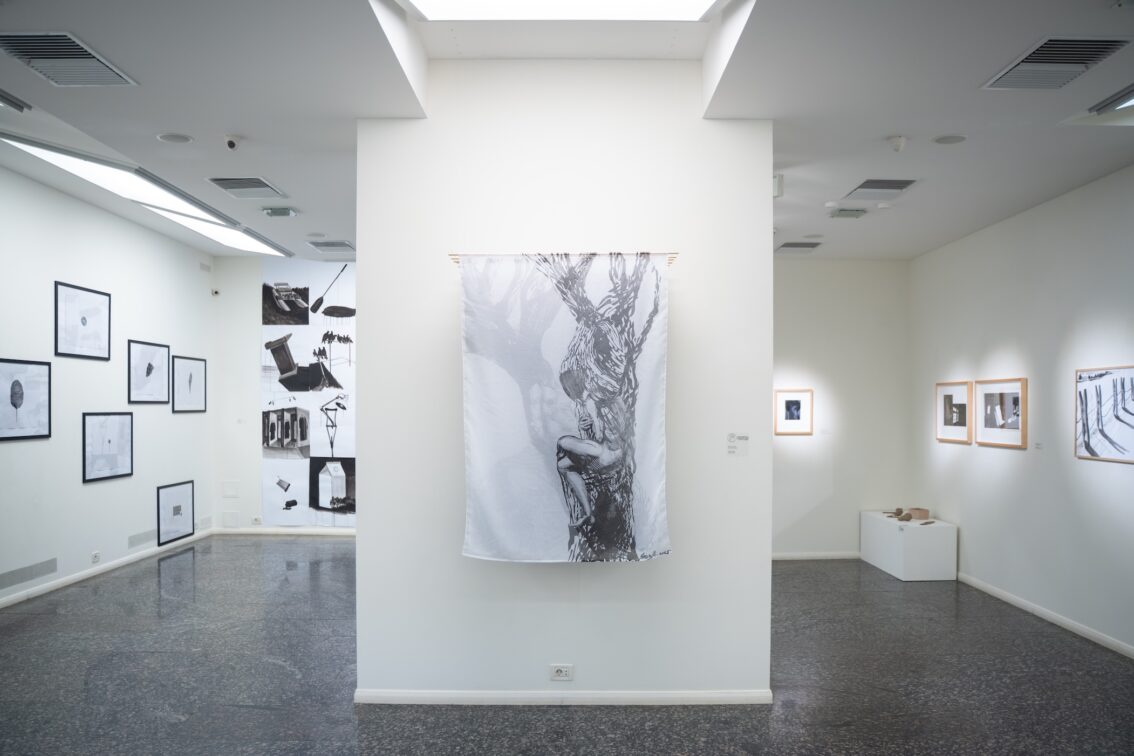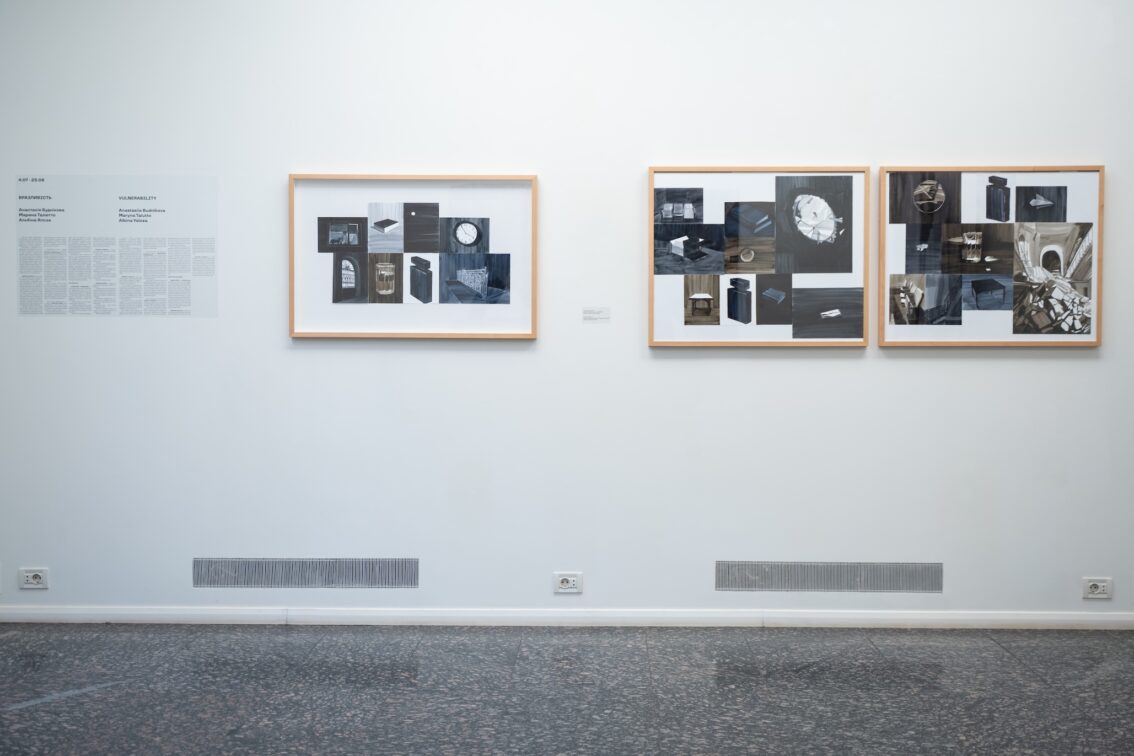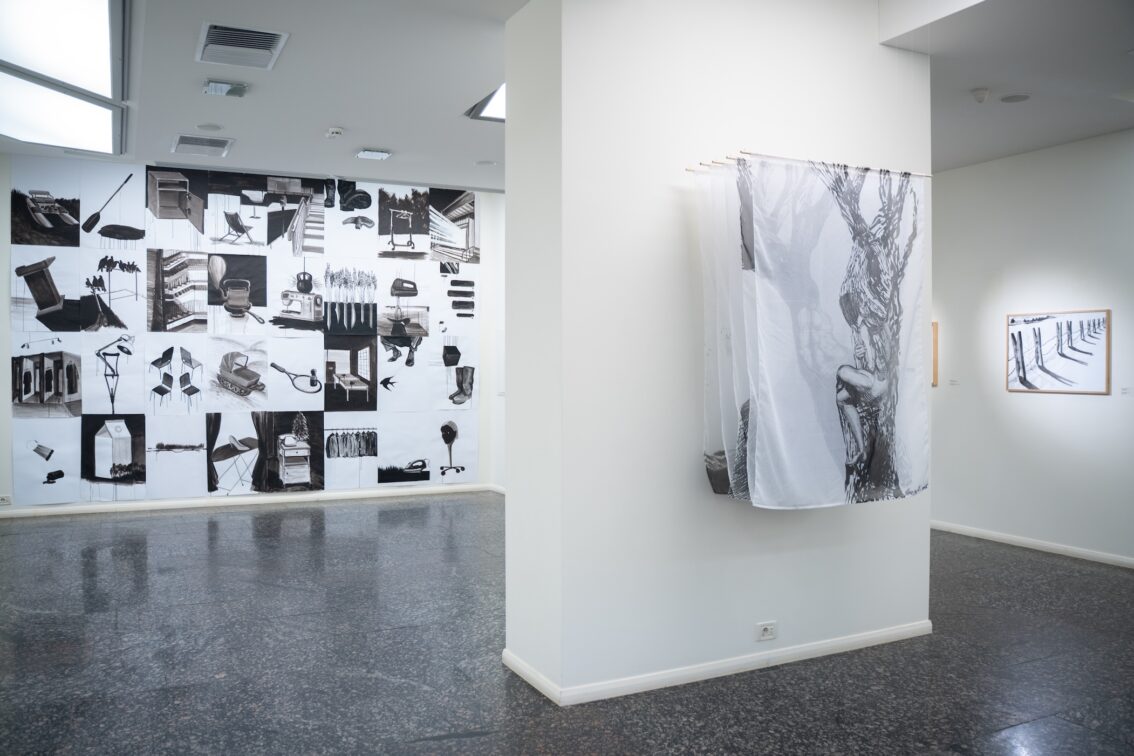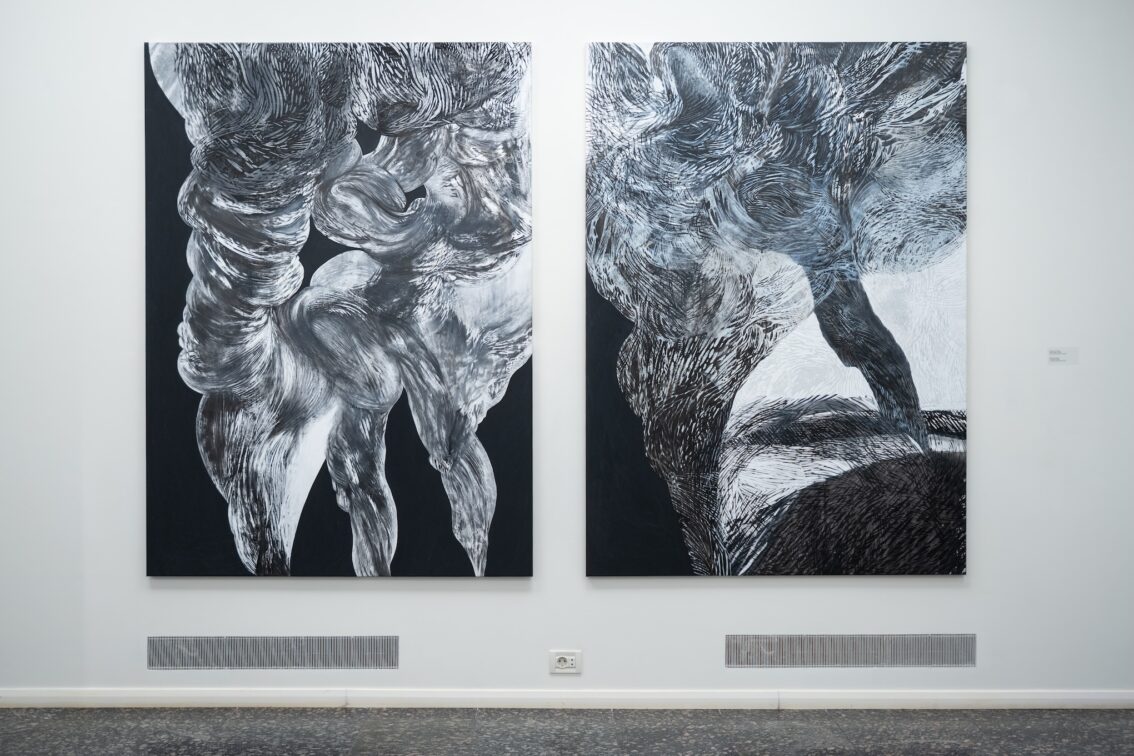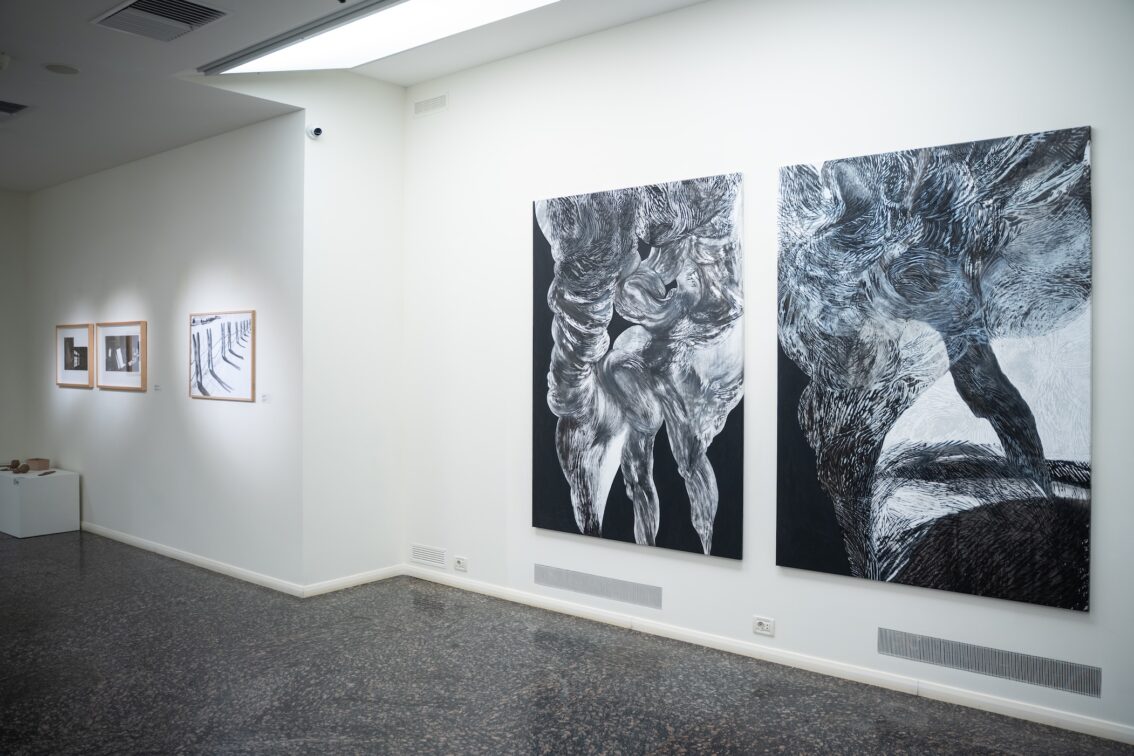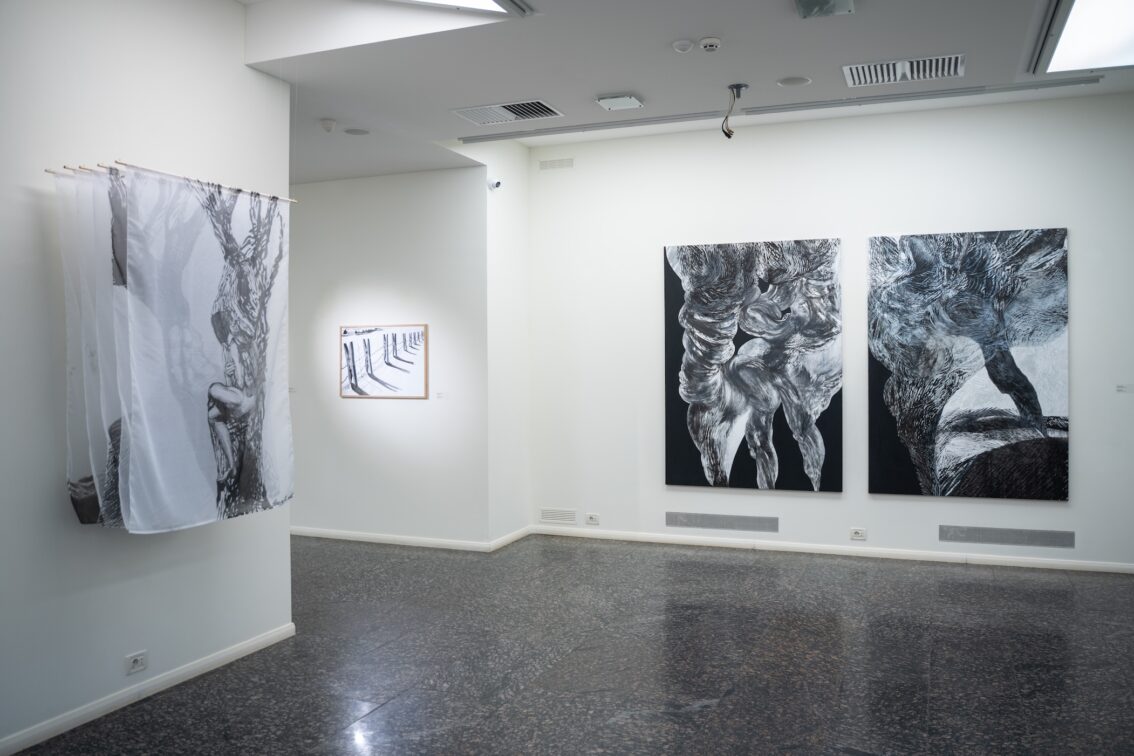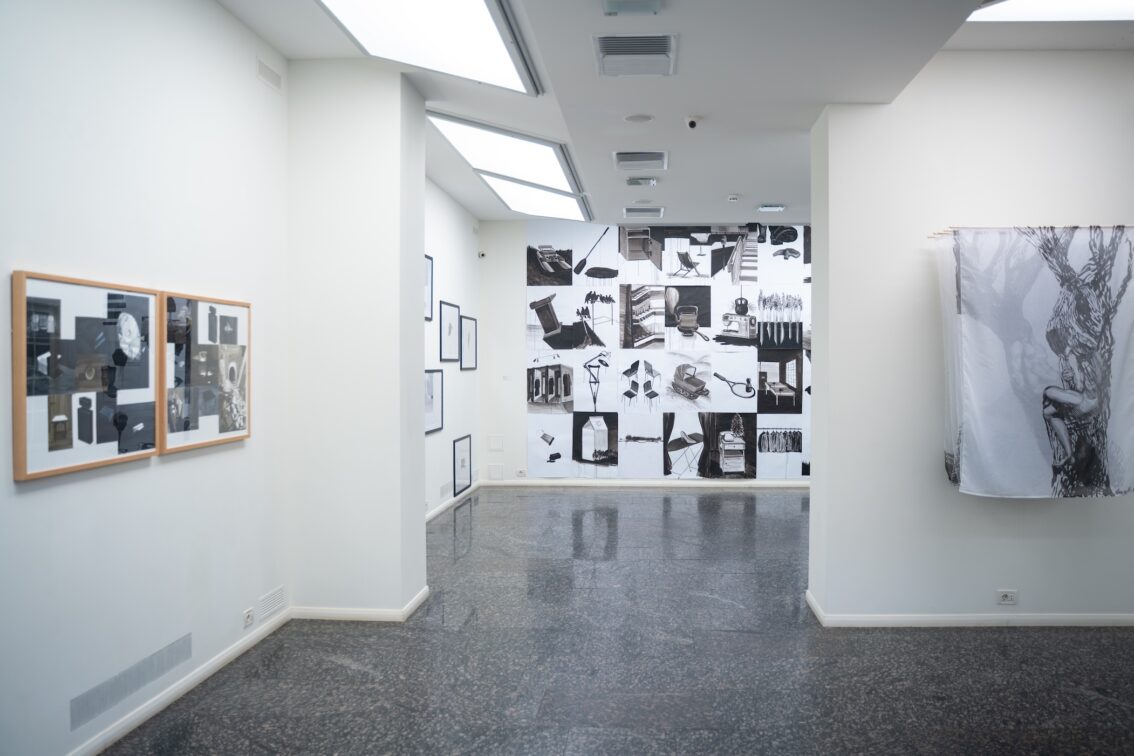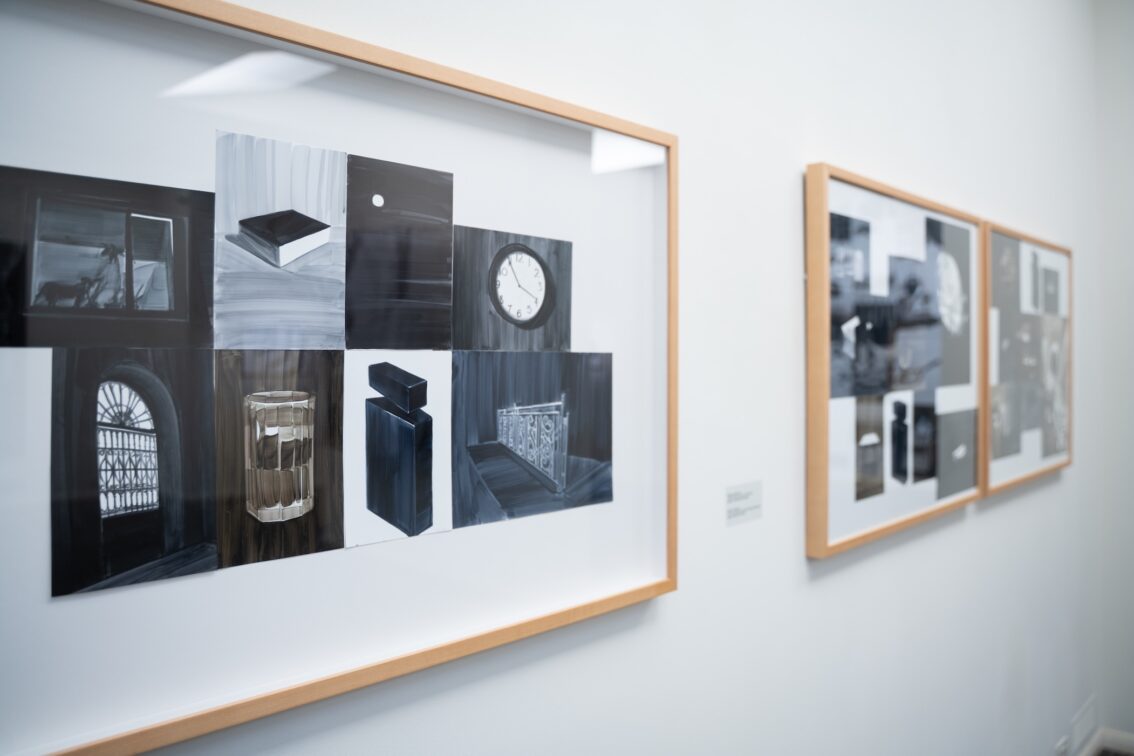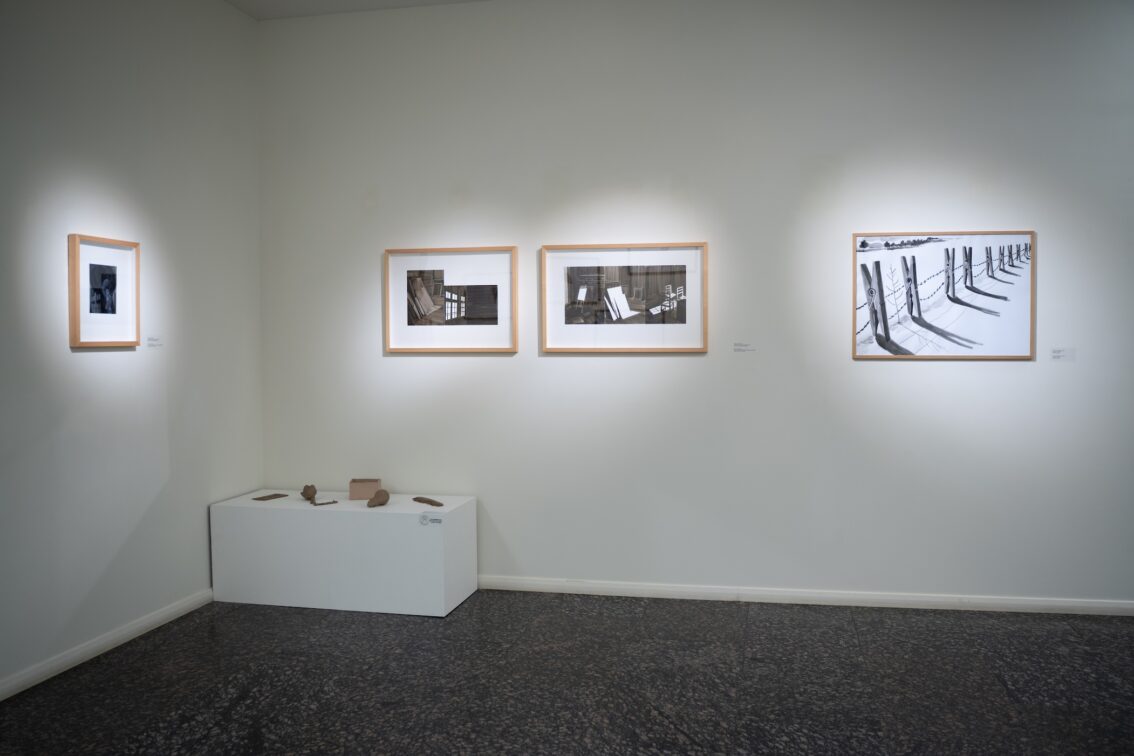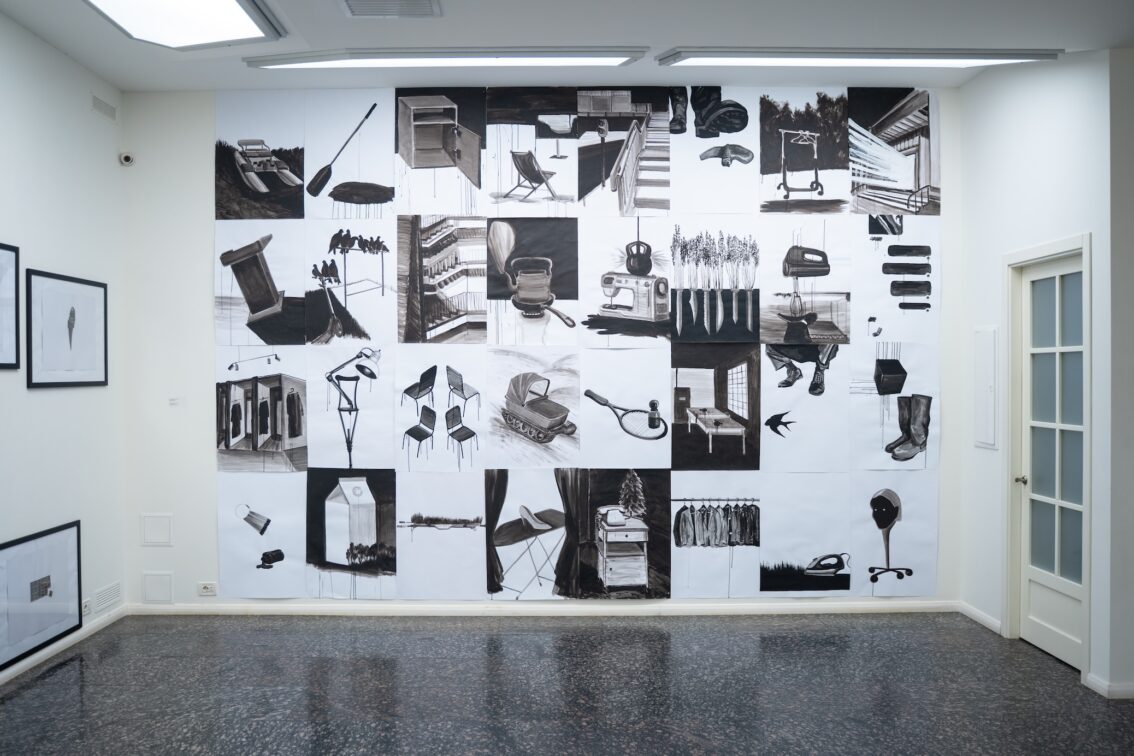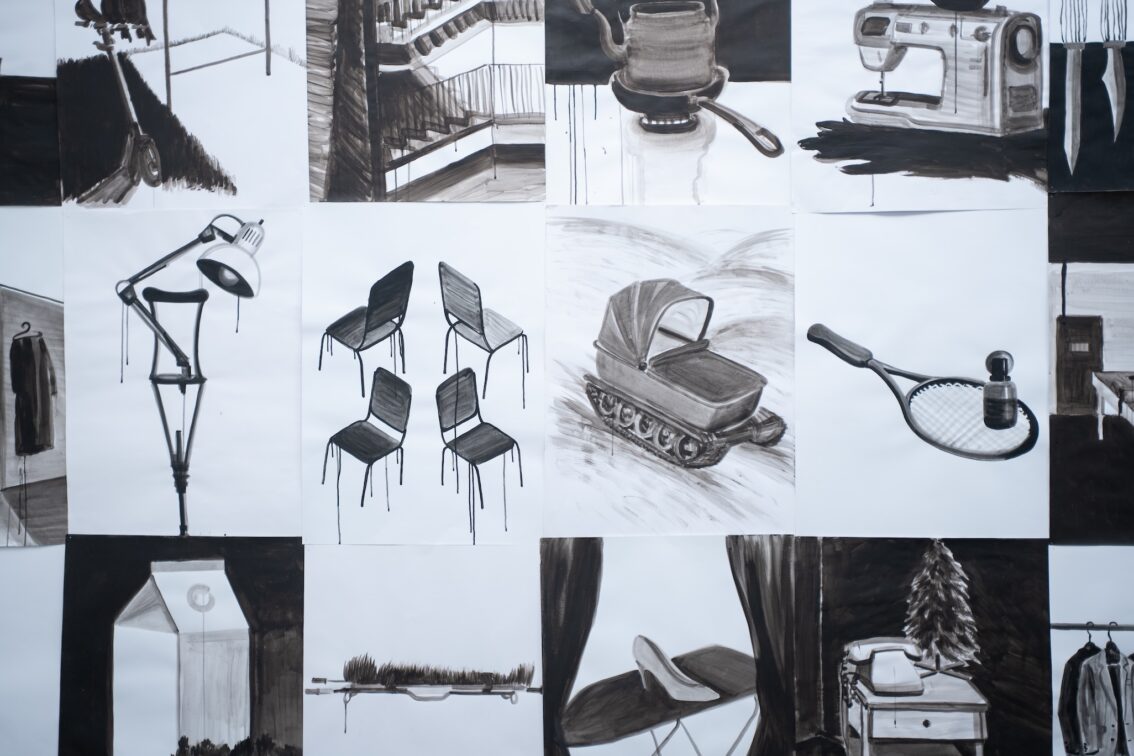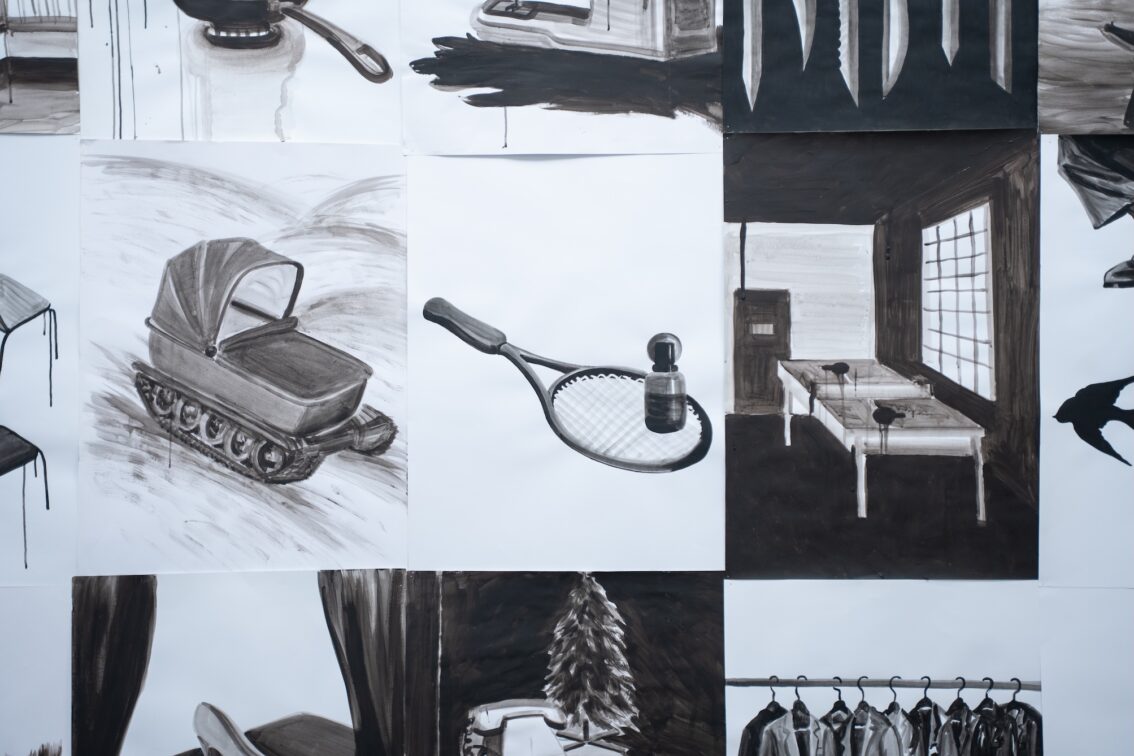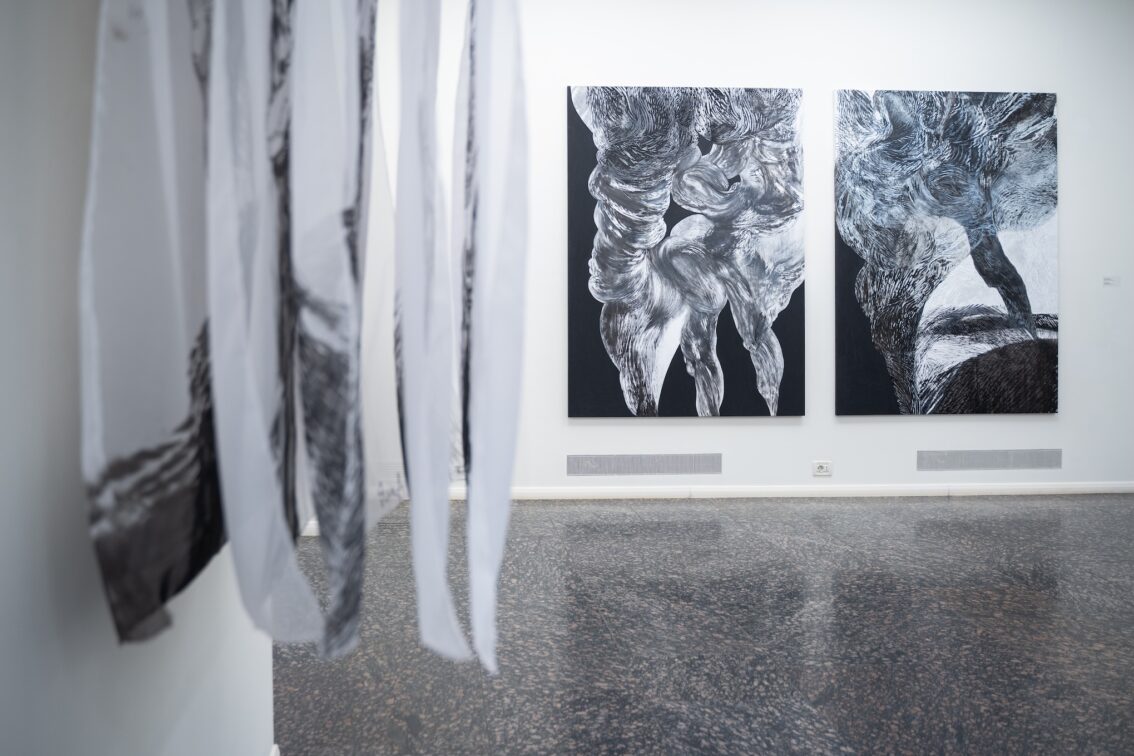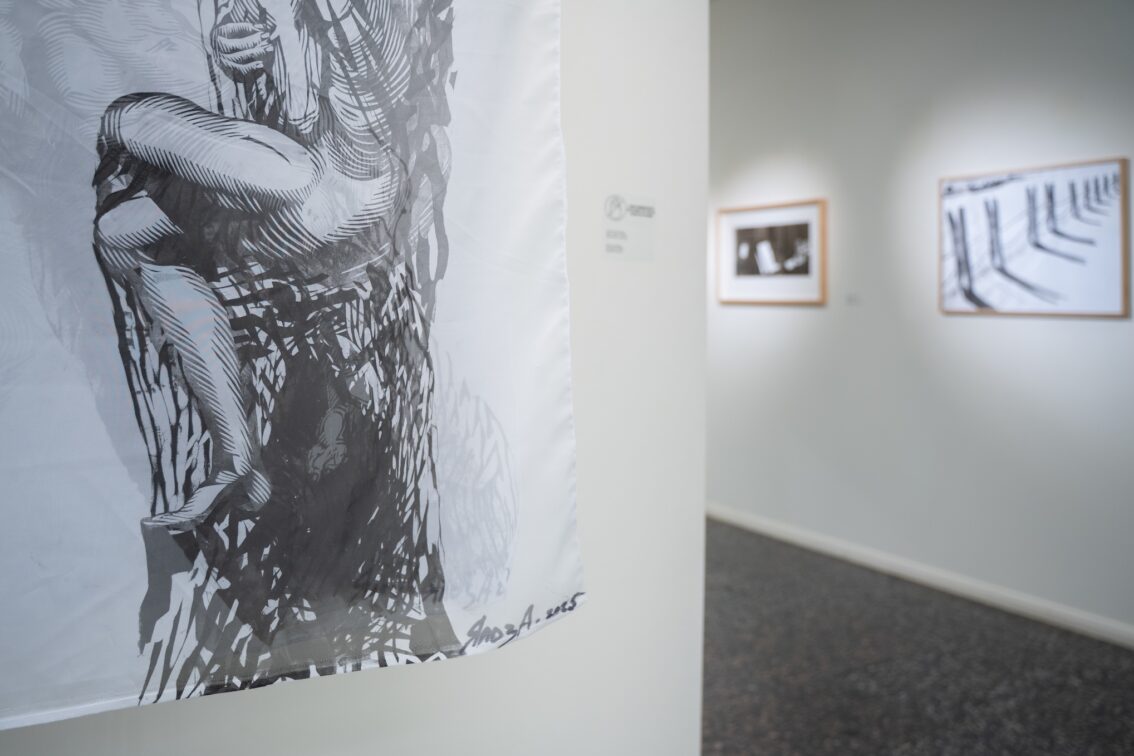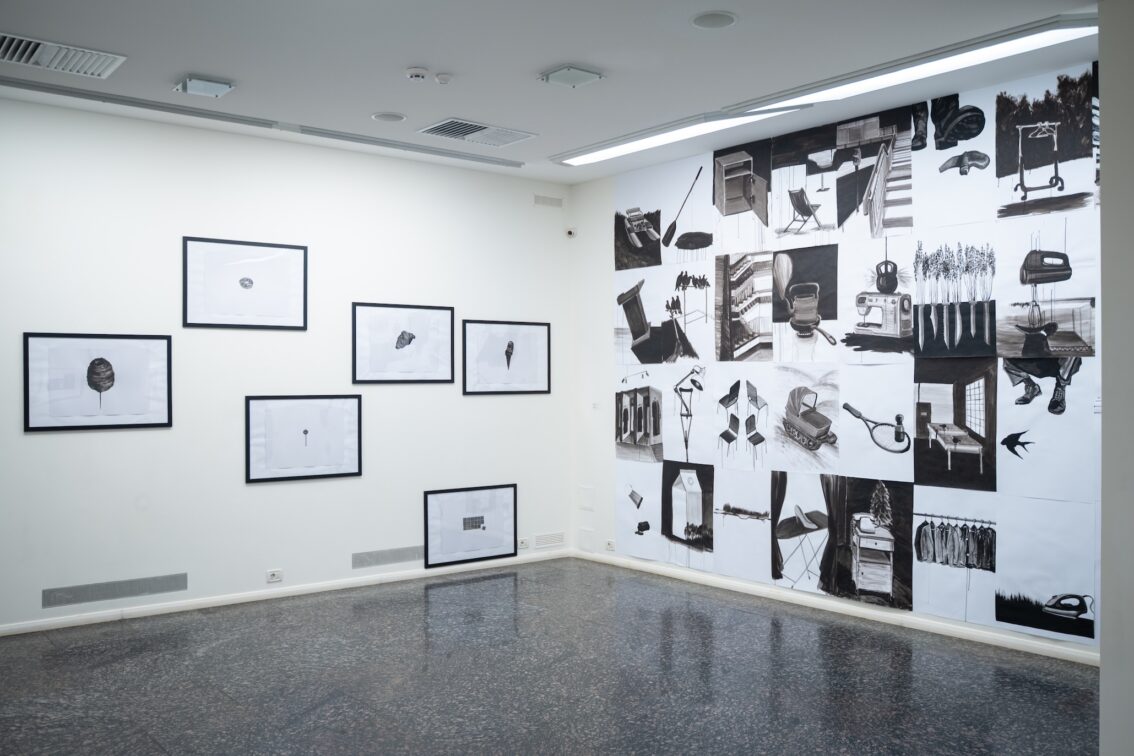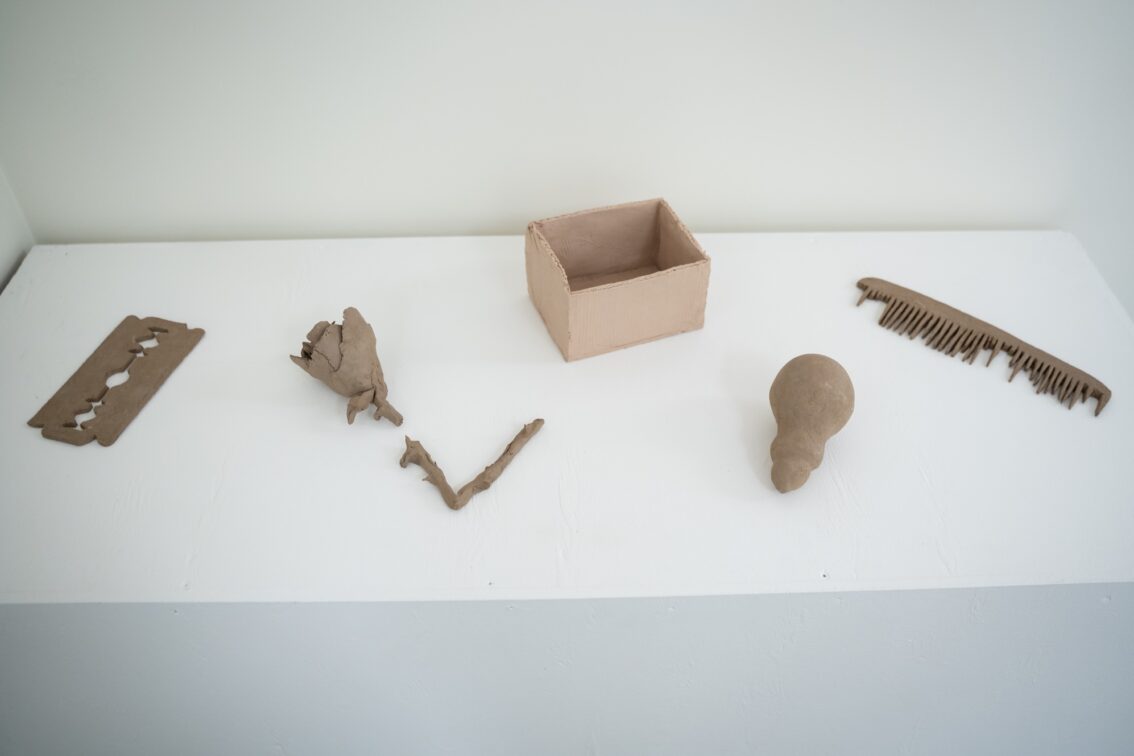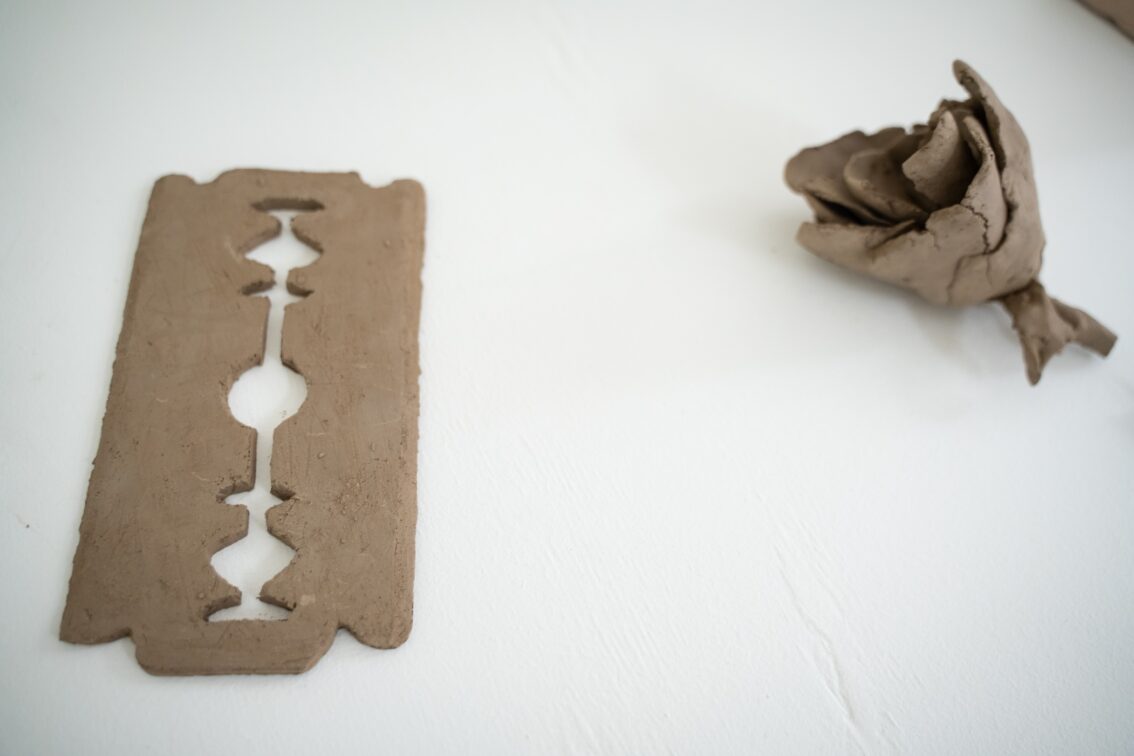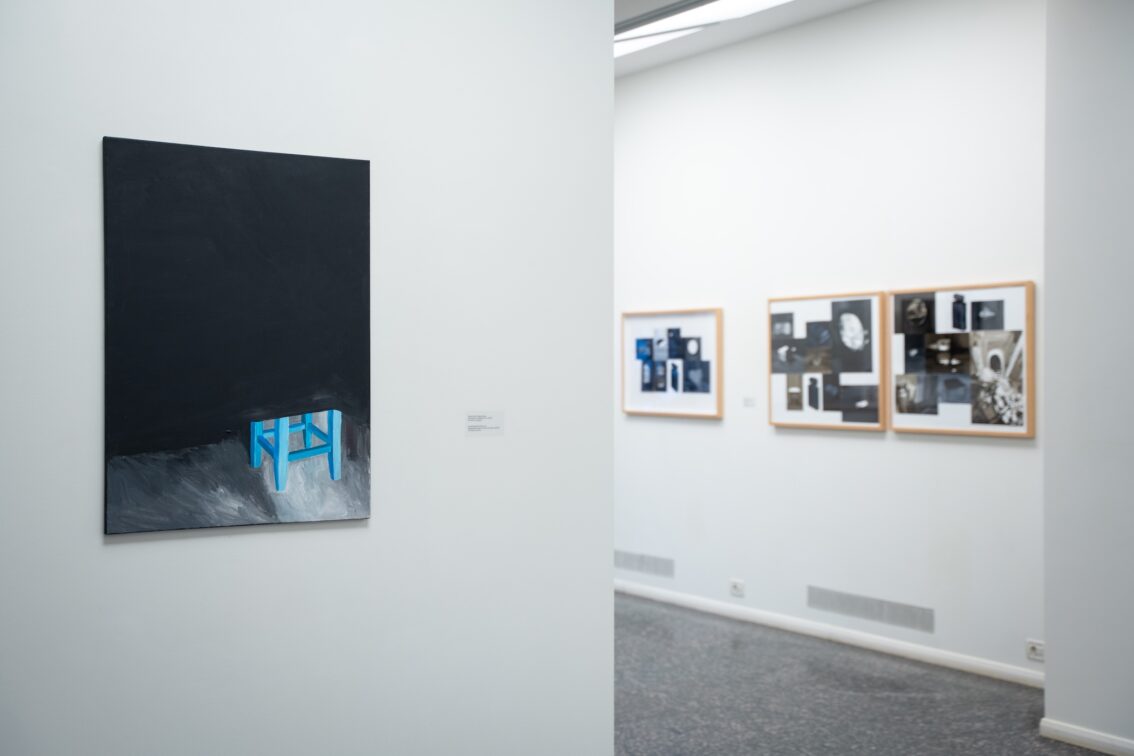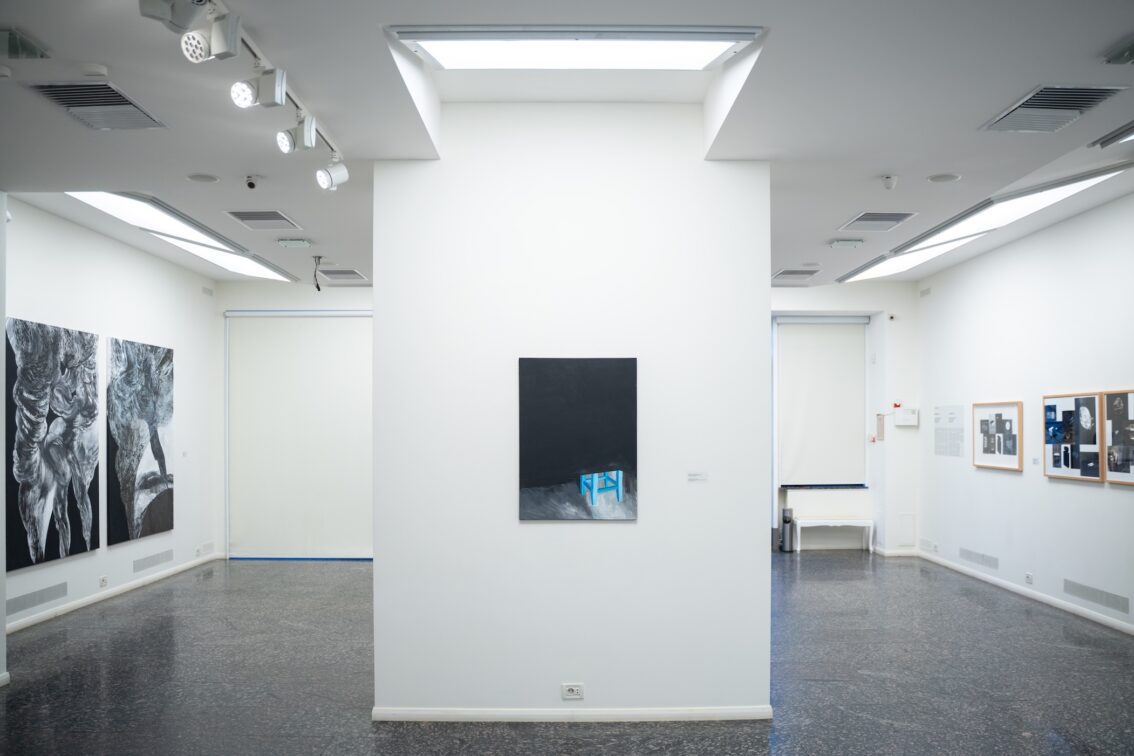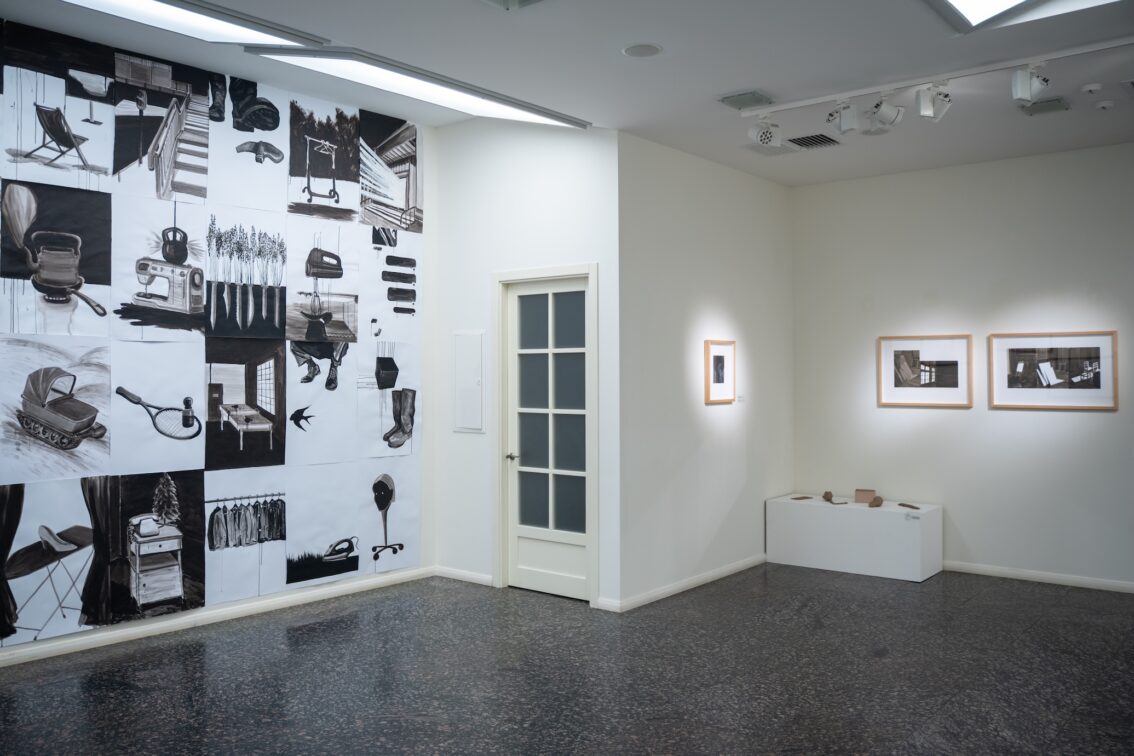Dymchuk Gallery presents Vulnerability, an exhibition featuring paintings, objects, and graphic works by three Ukrainian artists: Anastasiia Budnikova, Maryna Talutto, and Albina Yaloza.
This exhibition conceptually extends the themes from Fractured Tomorrows, but the focus shifts to lived experience during wartime. It offers an intimate, internal view of the fragility of the every day, the sensitivity to change, and the fragmentation of memory. All three artists give their works a therapeutic dimension — through the process of creation or careful contemplation of the forms of the environment. Working with material and familiar objects allows you to switch attention and find new meanings in everyday life despite its vulnerability.
Maryna Talutto, from the series Simple Things (2022–2025), uses familiar household imagery — such as table, window, and couch — as anchors in the present:
“The process of drawing helps me overcome the fragile uncertainty of the future and feel a semblance of stable, familiar life. In my drawings, I use images of ordinary, everyday life — familiar, stable objects from the spaces where my daughter and I have found ourselves during our journey of forced immigration.
Shifting my focus to everyday things is, in a way, my psychotherapeutic maneuver to preserve my mental state in the face of a completely shattered life during the war and the inability to plan for the future.”
Her ceramic works extend this series into the tactile realm. During blackouts, upon returning home from forced migration, Talutto became acutely aware of the space and objects around her: so vulnerable that searching for them by touch might damage or break them — in the same way her unfired clay works mirror the fragility of those days.
Continuing with the theme of household items, Anastasiia Budnikova’s works elevate these objects to carriers of hidden narratives and central figures in a tense compositional drama. These things lose their function and appear frozen between past and present, conveying instability, temporariness, and the trace of a person who is no longer there or actions left undone. Her pieces explore the space between reality and expectation, between the attempt to control and the inevitability of the unknown. In moments of uncertainty, even the simplest items become symbolic.
The Taste of Presence series by Anastasiia Budnikova is a memoir of bodily experience that keeps one connected to reality in times of crisis. In the context of the theme of the exhibition Vulnerability, these works refer to intimate spaces, to familiar images that have the ability to ground a person when everything around them seems fragile and unstable.
On the other side of Vulnerability, Albina Yaloza’s works illuminate a collective experience — trauma too overwhelming for words, yet rendered through rhythm, material, and image.
Her early post-invasion pieces depict plumes of smoke from explosions, unconsciously emerging on the canvas. Using linocut—a familiar technique—Yaloza carved small pieces and layered their prints one after another as a form of self-composure. It was an internal impulse to create, without specificity, with meaning emerging only in the process.
The installation of five linocuts on textiles is the artist’s attempt to protect the image and spirit of women who died as a result of violence during the occupation. The author turns to a myth that tells of the love chase between the god Apollo and the nymph Daphne: the god in love pursues a nymph who does not want his love. Therefore, Daphne turns to her father, the river god Peneus, with a request to save her. In response to her prayers, he turns his daughter into a laurel tree, which makes the nymph unattainable to Apollo, and the laurel tree becomes a sacred tree for the god.
About the authors:
Anastasiia Budnikova (b. 1979, Kyiv): Fine artist and designer working across painting, graphic arts, and video; alumna of the Taras Shevchenko State Secondary Art School and the National Academy of Fine Arts and Architecture (Painting & Graphic Design); member of the National Union of Artists of Ukraine since 2004; actively participate in various exhibitions and cultural projects both in Ukraine and abroad; she worked in graphic design for 15 years but later returned to art; since the beginning of the full-scale invasion of Ukraine (2022), she has been living and working in Krakow, Poland.
Maryna Talutto (b. 1982, Kyiv): Ukrainian artist working across installation, graphics, and audiovisual media; alumna of the Taras Shevchenko State Secondary Art School and the National Academy of Fine Arts and Architecture; actively participates in various exhibitions and cultural projects both in Ukraine and abroad; recipient of Gaude Polonia scholarship grant (2010) and grant Goethe-Institute Kraków grant (2022); lives and works in Kyiv.
Albina Yaloza (b. 1978, Kharkiv): Ukrainian artist specializing in traditional linocut for over 15 years, experimenting and looking for original printing methods; graduate of Kharkiv Art School (painting) and Kharkiv State Academy of Design and Arts (graphics); actively participate in various exhibitions and cultural projects both in Ukraine and abroad; member of the Union of Artists of Ukraine since 2010; lives and works in Kyiv.

